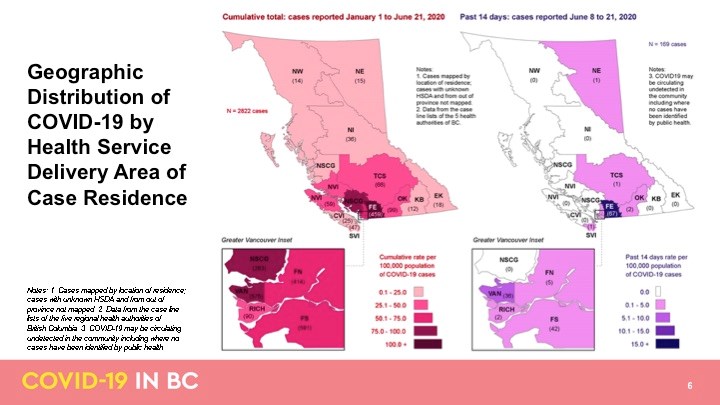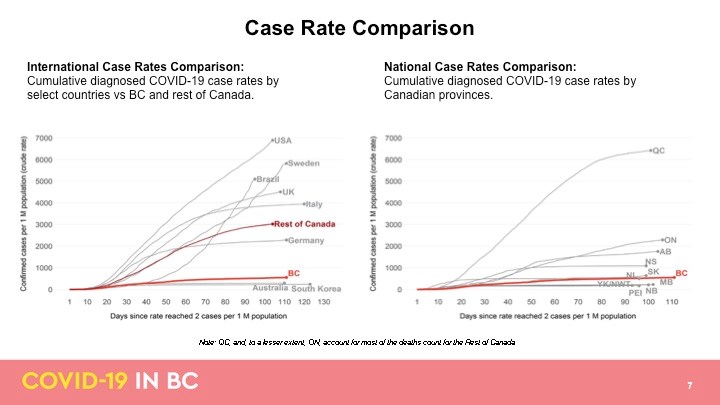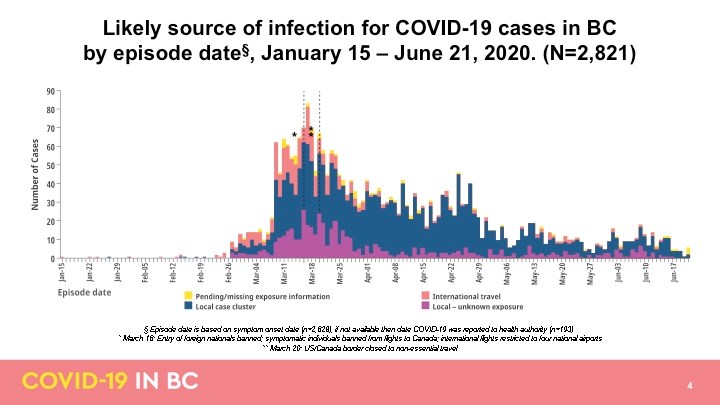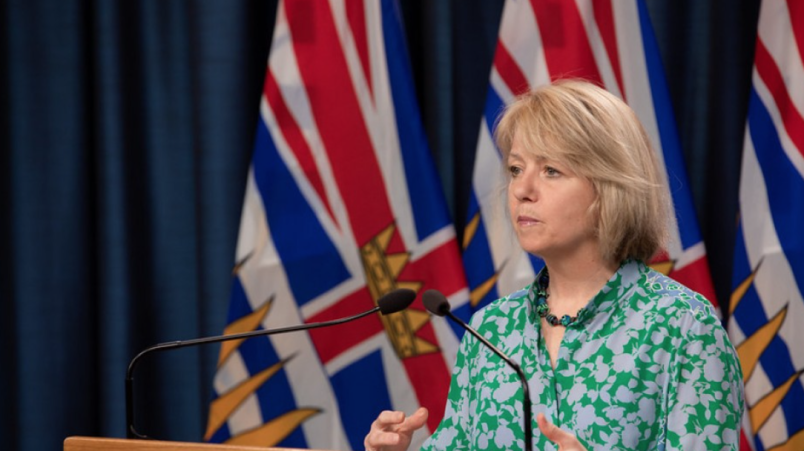The North Shore and surrounding areas have had no cases of COVID-19 in the past two weeks and only four cases in the past five weeks, according to information released Tuesday by provincial health officer Dr. Bonnie Henry.
The good news comes as B.C. Premier John Horgan announced Wednesday the province is moving into Phase 3 of its “restart” program, meaning more businesses like hotels, resorts and the film industry will reopen and recreational travel within the province will be allowed.
Provincial statistics show there have been 263 cases of COVID-19 in the North Shore Coast Garibaldi health region between Jan. 22 and June 21. The vast majority of those were on the North Shore itself, in North Vancouver and West Vancouver.
Statistics released Tuesday showed most COVID-19 cases in the past two weeks have been reported in Fraser East health area, along with Vancouver and Fraser South. A number of the Vancouver cases have been linked with an outbreak at a long-term care facility and with temporary foreign farmer workers from Mexico, who are in quarantine. A handful were also connected with international travel, including repatriation flights coming back from India.

Henry said the good news is most recent cases have an identifiable source. That’s in contrast to the situation in March, when there were far more cases of unknown origin – which is an indication of more widespread community transmission.
Health officials have also been working with other jurisdictions to develop a test of sewage wastewater than could serve as an early warning of COVID-19 cases. So far, in testing of Metro Vancouver sewage samples over the past month “we have not found it in any of the wastewater samples,” said Henry. “It reflects that we have a low level of transmission.”
Italy and other European countries have used similar testing to determine COVID-19 was likely circulating in the community far earlier than first realized – in December and January – said Henry.

Data indicates British Columbians are now out and about far more than they were in the early days of the pandemic, said Henry, with visits to retail shops, parks and workplaces up and time spent at home decreasing. Activity is about 65 per cent of normal, said Henry, warning that is also a threshold when the virus could take off again if people aren’t vigilant about hygiene and social distancing measures.
In announcing Phase 3 of B.C.’s reopening Wednesday, Horgan cautioned that it’s not a return to normal.
While tourism-dependent businesses are counting on business from British Columbians this summer, Horgan said travel must be respectful. “Be mindful of who you’re around. Be mindful of what you do. This is not regular programming.”
Both Horgan and Henry voiced concern about the spiking numbers of COVID-19 cases in the U.S., including just over the border in Washington State.
“It’s very concerning what we’re seeing in parts of the U.S.,” said Henry.
Horgan said B.C. is continuing to work with the federal government on the border issue “to keep our international border closed.”




